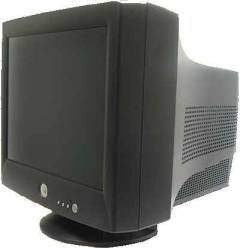

A monitor or computer monitor is a video output device of a computer. It displays as pixels, the images generated by the graphics card of the computer.
Two types of screens:
1 - Analog screens: These are older screens called Cathode Ray Tube Screens (abbreviated to CRT for Cathod Ray Tube), which is used on most desktops. These are bulky, heavy monitors with high power consumption.
2 - Digital screens: are flat screens equipping all laptops, and a growing number of desktop computers. They have the advantage of being small in depth (hence their name), light and with low power consumption.
We distinguish :
Liquid crystal displays are light and simpler to industrialize but have certain limitations, especially in color rendering.
DLP (Digital Light Processing) displays use millions of micro-mirrors.
Plasma screens, offer a faithful rendering, but are expensive and have a limited life: technology gradually abandoned.
Touch screens, on some systems, the screen can also be used as input device: the user can choose an action by touching the corresponding part of the screen.
A monitor is characterized by:
Its definition: it is the number of points (pixels) that the screen can display.
Its size: It is calculated by measuring the diagonal of the screen and is expressed in inches (one inch equals 2.54 cm).
Its resolution: It determines the number of pixels per unit area (DPI: Dots Per Inch)
Its refresh rate is defined by the number of images displayed on the screen per second.
Several graphic modes exist:
CGA
EGA
VGA
SVGA
